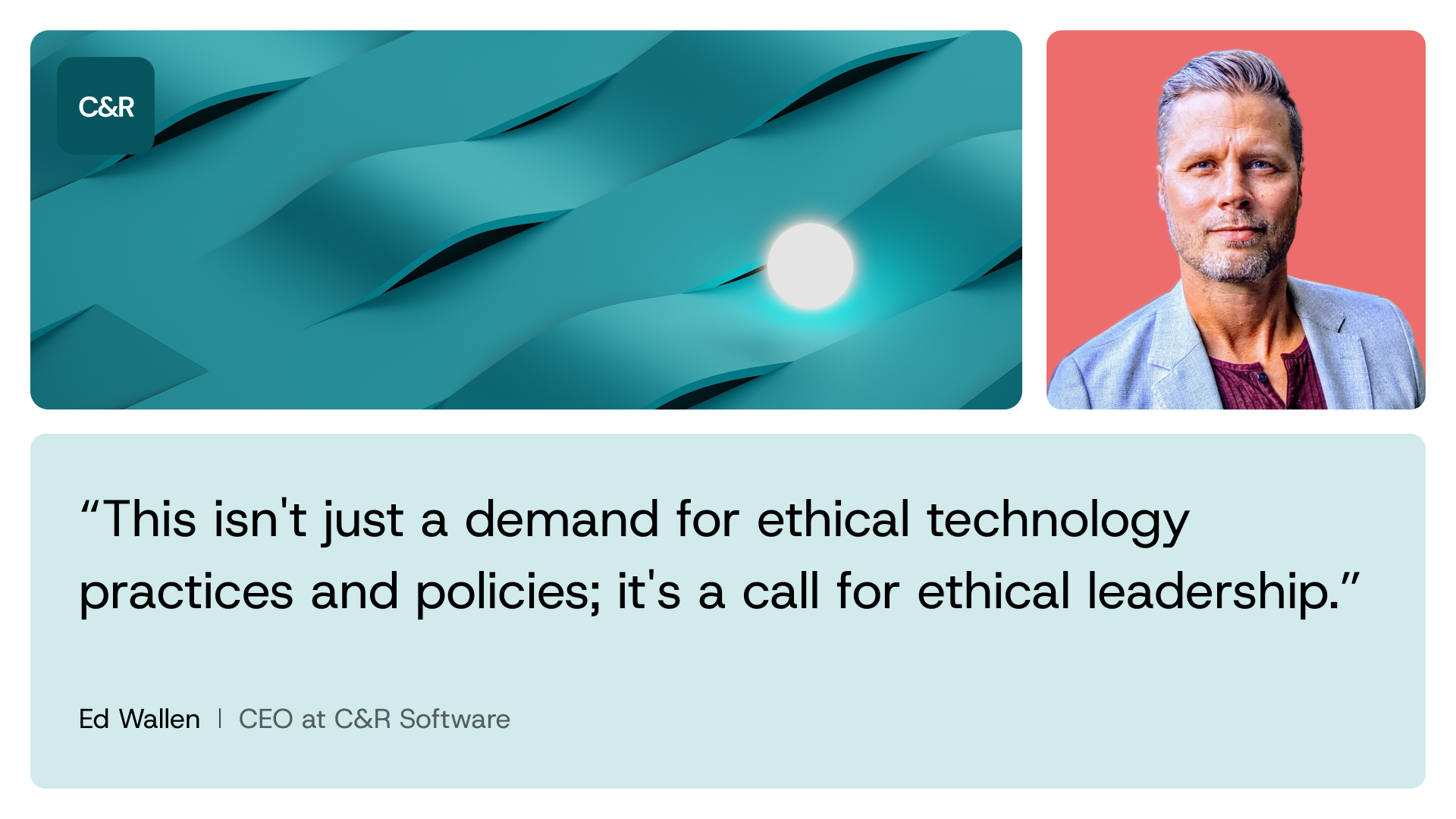Ed Wallen is the CEO of C&R Software, whose mission is to humanize collections via their world renowned cloud-native, end-to-end platform.
Today’s consumers are at the mercy of an array of technologies. This is a long way from the earliest versions of protecting one’s personal data or identity that consisted of trustworthy signatures and handshakes. Now the cost of most goods or services is the collection of personal information.
As a result, “ethics in tech” enters the conversation. With technology advancing at a speed beyond comprehension and human existence operating almost exclusively online, those developing, managing and utilizing said technology have a moral responsibility to establish and maintain boundaries to prioritize the human experience over technological gain.
How does one navigate this ever-evolving and expanding issue? And whose responsibility is this to carry?
If we aren’t careful, curiosities and concerns regarding data privacy may turn into another iteration of the bystander effect. All levels of the organizational hierarchy could very well operate under the premise that there’s no imminent danger, and certainly, someone, somewhere, is working to ensure that. Technology has increased efficiency in nearly every aspect of human life. Engineers are developing technological tools with the goal of increasing revenue or cutting costs, an irresistible goal for many corporations.
But the technology remains just that—tools in an obscure Mary Poppins-esque toolbox. It’s up to the organization to acknowledge its values—ideally for the customer and employee—and see past short-term gains when they come at the expense of brand integrity and employee or customer retention.
In what ways are principles of ethics enforced in this space? At the risk of oversimplification, it starts with the culture of the organization, and the culture must be emblematic of the entire roster. Is there trust in the leadership? Are employees presented with the opportunity to practice work-life balance? Are companies weighing the importance of the customer relationship? Is senior leadership setting the example for the rest of the employees by exhibiting the characteristics representative of company culture?
As our day-to-day lives home in around a screen and our personal interactions turn virtual, more privacy is at risk. Headlines have inundated our senses with controversial, vague or even nonexistent security policies, widespread misinformation and data breaches from top dogs like Facebook and Twitter.
Keeping in mind that the customer and employee are any organization’s most valuable assets, with every missed opportunity to practice ethical use of technology, the relationship between the customer and the brand, or the employee and the employer, is now tarnished. As human behavior has demonstrated time and time again, trust takes a lifetime to build but only an instant to break.
How can leadership and developers continue to embody ethical practices in order to build customer and employee trust?
The advancement of technology isn’t slowing down. As soldiers returned home from World War I, there was no attempt made to shut down mass production and mechanization because of a nostalgic desire to recreate jobs and reinstate manual labor. A 2019 report from Oxford Economics predicts automation could replace nearly 9% of the global manufacturing workforce, displacing upward of 20 million jobs as early as 2030 (pg. 4).
This isn’t just a demand for ethical technology practices and policies; it’s a call for ethical leadership. Even if your company is not developing software or isn’t distinctly a technology company, it undoubtedly relies on the use of technology, so no governing leadership is off the hook.
The good news: Implementing new technologies does not have to imply an infringement of ethics. Establish and secure proper protections as the company evolves and advances. Appoint personnel and leadership to be responsible for upholding the protections and do so in the best interest of the customer and employee. Anticipate areas for potential risk or consequence. Too often, a new technology offers convenience and excitement so prominent that it overpowers any hint of vulnerability or danger, and, therefore, the effort to enforce ethical practices becomes reactive as opposed to preventative.
Ultimately, it comes down to responsibility and accountability. Business leaders must do their due diligence to always put the customer experience and employee relationship first. It’s the old-fashioned trickle-down effect. If industry giants set the example, if C-suite executives follow suit and if leaders of all organizations put forth the effort to implement new technology without completely removing humanity from the equation, culturally, we stand a fighting chance at not only embracing new and efficient technologies but doing so with confidence and trust—in your brand and each other.
Forbes Technology Council is an invitation-only community for world-class CIOs, CTOs and technology executives.


-2.png?width=352&name=operationalize%20AI%20(17)-2.png)
.png?width=352&name=operationalize%20AI%20(10).png)
-2.png?width=352&name=operationalize%20AI%20(1)-2.png)
-3.png?width=352&name=operationalize%20AI%20(16)-3.png)
